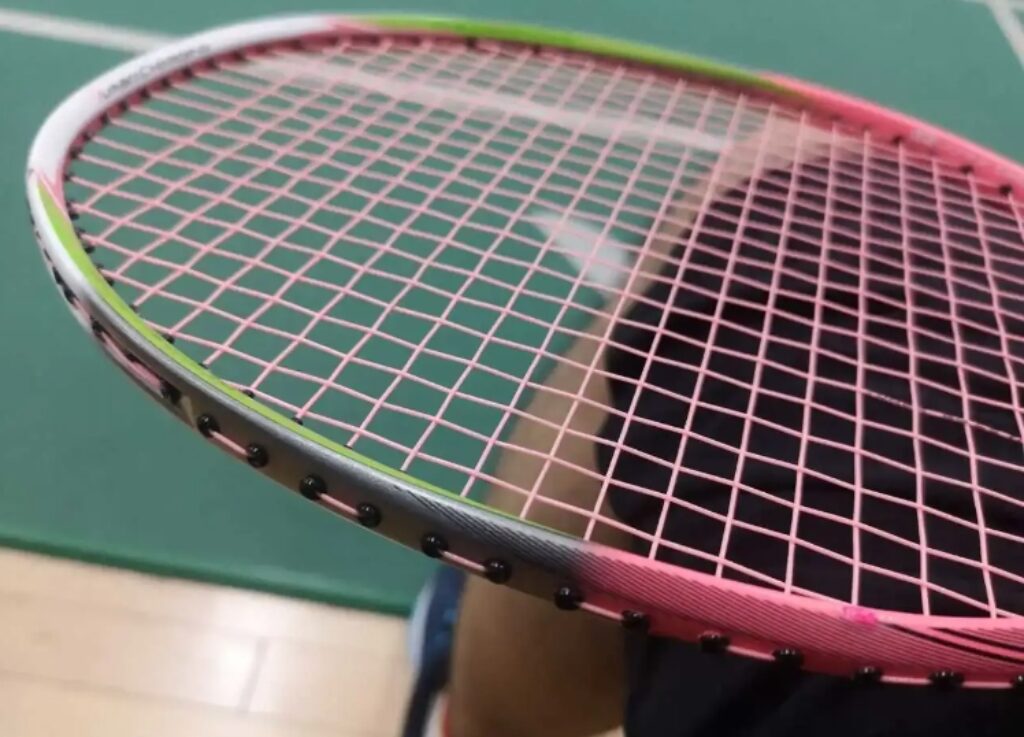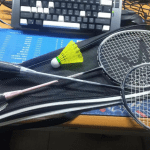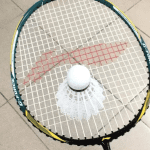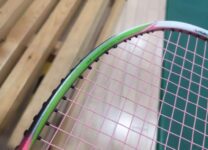
Badminton Racket Lining Turbo Charging 70i Reviews
Just the fact that it’s the “Zhao Yunlei signature racquet” already gives it enough of an
After the Energy series was introduced, this legendary racquet naturally came under the Turbocharge banner. The current test is of a used racquet, and although I haven’t played with it extensively, it perfectly matches my stereotypical impression of high-end Li Ning racquets from that era. Not in a derogatory way, not at all.

Specifications: 5UG6, stripped down, current total weight 86.0g, balance point 306mm, shaft length 220mm, moderate hardness, Energy Reversal Breakwind Frame, 76-hole string bed, 8-2 o’clock string groove, 32-pound warranty, strung at 25-27 pounds with BG65TI.
Many might have bought this racquet for its cute pink design. The racquet head is white, with cyan-green on the wings, and the frame lower part is entirely pink, creating a layered and stylish appearance. The Energy 70I seems to be the first Li Ning racquet with such a pink design, representing a transformation from the “tomato and egg” era. However, it doesn’t quite fit Zhao Yunlei’s image, haha. Moreover, the sharp Breakwind Frame combined with the painting process of that time makes it prone to chipping, which becomes quite noticeable. The racquet I have has several visible chips.
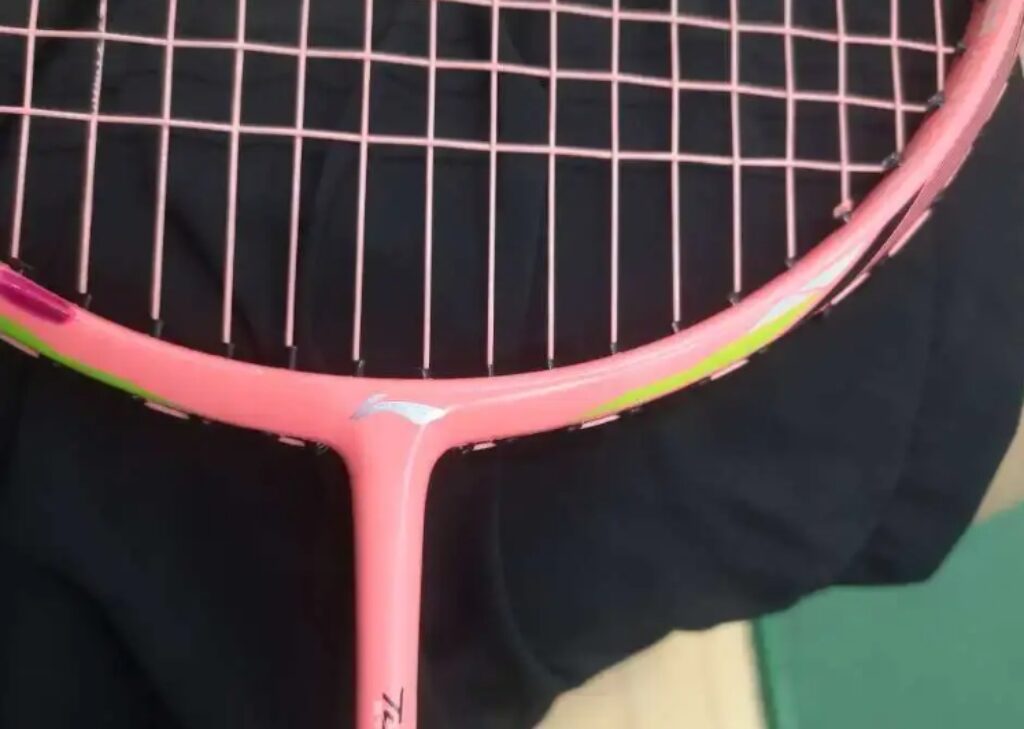
I wonder if any female players bought it for its looks but found it unsuitable for them, similar to the fate of the Speed 12F. Even I felt that this 5U racquet was unexpectedly heavy, which perfectly fits my stereotypical view of older Li Ning 5U racquets — ultra-light but with high swing weight, like a meteor hammer.
The head-heavy design indeed provides a noticeable leverage effect. During warm-up for high-clear shots, the 70I felt comfortable to use. With a long shaft, the deformation threshold is low, and the racquet face and sweet spot are exceptionally large. The slightly wider frame compared to the Blade series makes it easier to adapt to high swing speeds, allowing for accurate high-arcing backcourt shots.
It might be my illusion, but I feel the 70I doesn’t have as much “sugar” as the 3UN72. Although the shaft hardness between the two seems not drastically different, the 70I is rated lower in hardness according to equipment information.
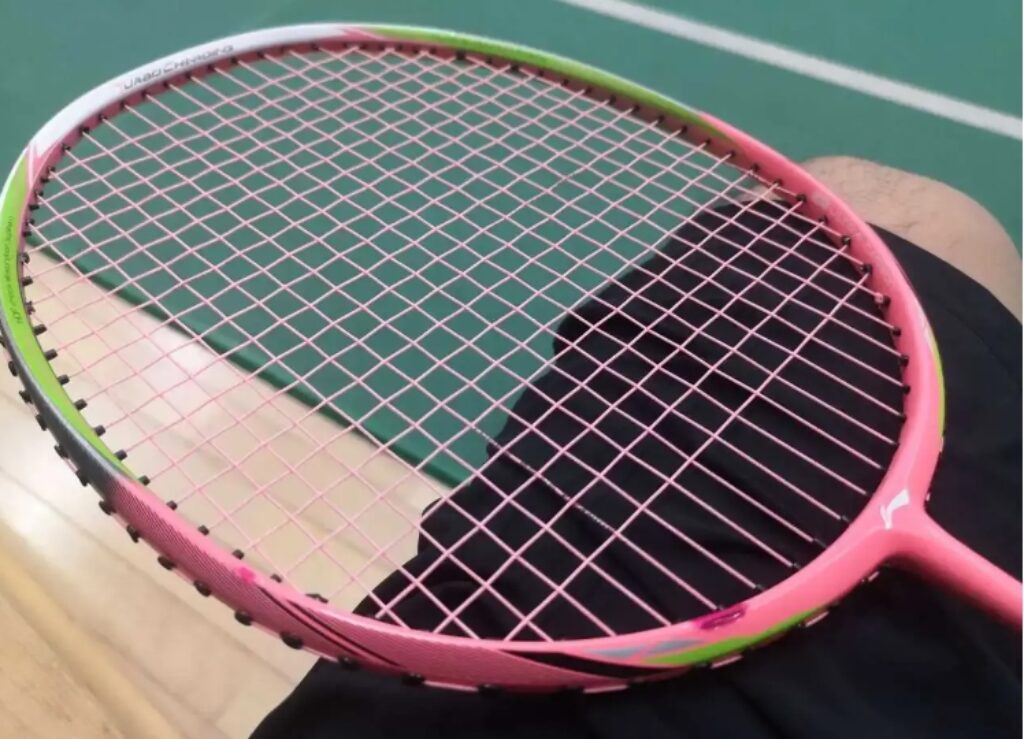
In flat drives, while not extremely agile, it surprisingly has power. Due to the strong head-heavy feeling, the 70I experiences a slight delay during the transition from setting up to swinging, forcing users to adjust their grip position to improve continuity. However, during continuous drives, the 70I shows a noticeable driving force, utilizing the shaft’s elasticity to produce powerful and aggressive shots. The large sweet spot makes it easy to handle, and despite being somewhat unskilled, I found it challenging to handle shots to the side, but everything else was manageable.
The 70I has an extremely strong smash capability. Even for many amateur male players, the feedback and shot quality during attacks are excellent. Although many criticize older Li Ning racquets for their soft shafts, the elasticity is quite good. Additionally, the high balance point adds to the weight of the head during smashes. Zhao Yunlei’s comprehensive skill level complements this racquet well — I retract my earlier comment.
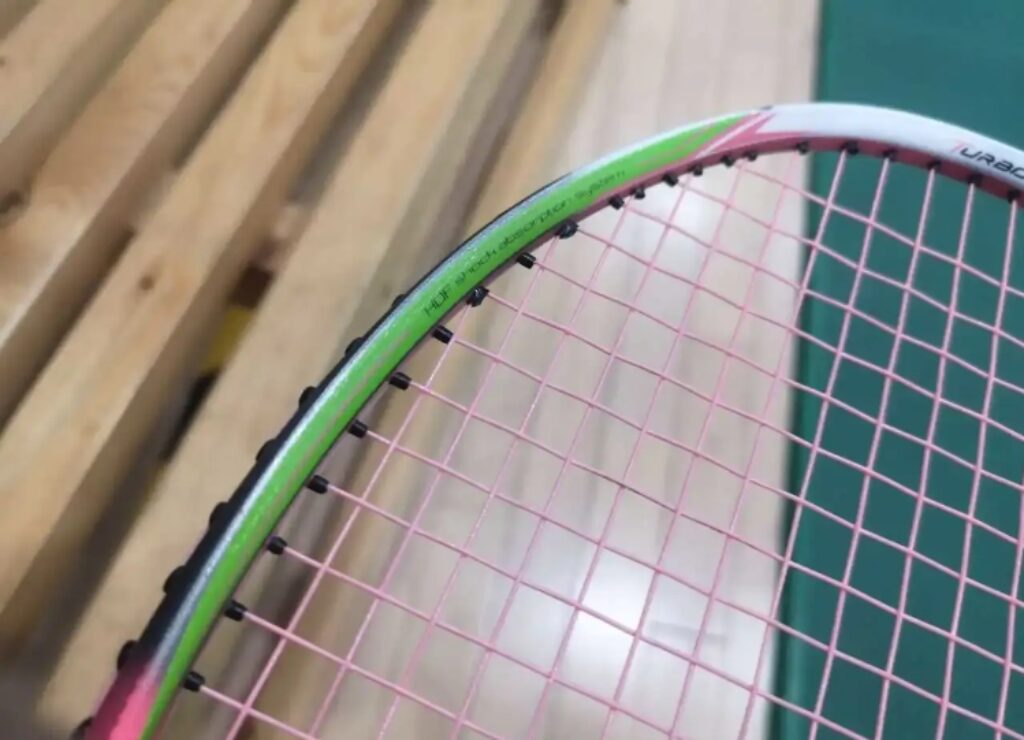
Moreover, I think this racquet is quite sufficient for many singles scenarios. The large racquet face and solid feel boost confidence in net play. Its defensive adaptability is also impressive; the large face and high elasticity make it easy to handle defensive shots, although controlling the shuttle to the backcourt requires some effort to avoid going out.
However, it’s not without flaws. The racquet still has issues with direction control during long shots. Whether it’s due to the Breakwind Frame’s inherent disadvantage or the soft shaft leading to head wobble, the 70I’s performance in controlling long-shot placement isn’t as precise, lacking in hardness and directness.
Overall, I see this as a direct competitor to the Speed 12F, and after using it, I feel a sense of wanting more.
